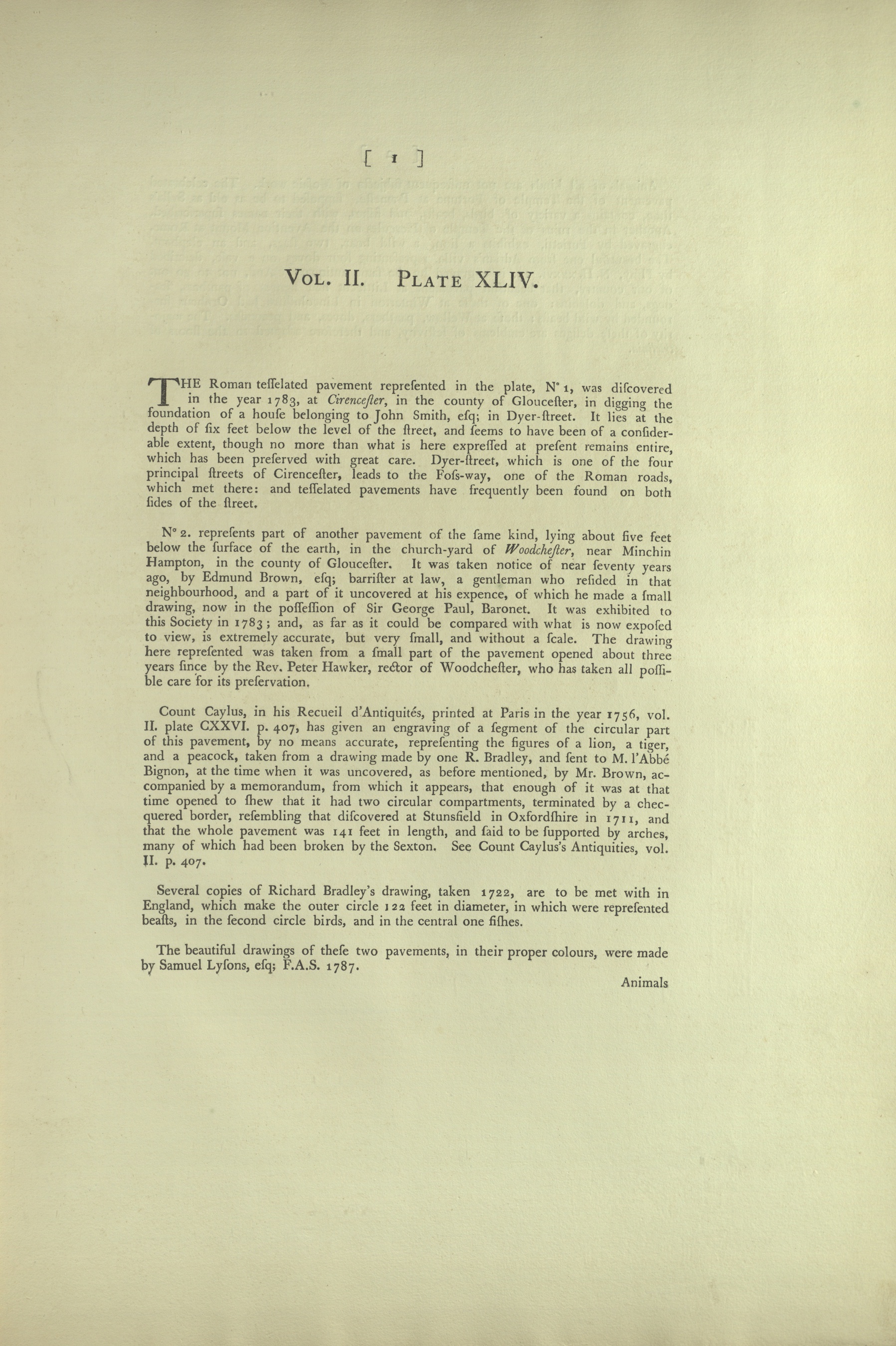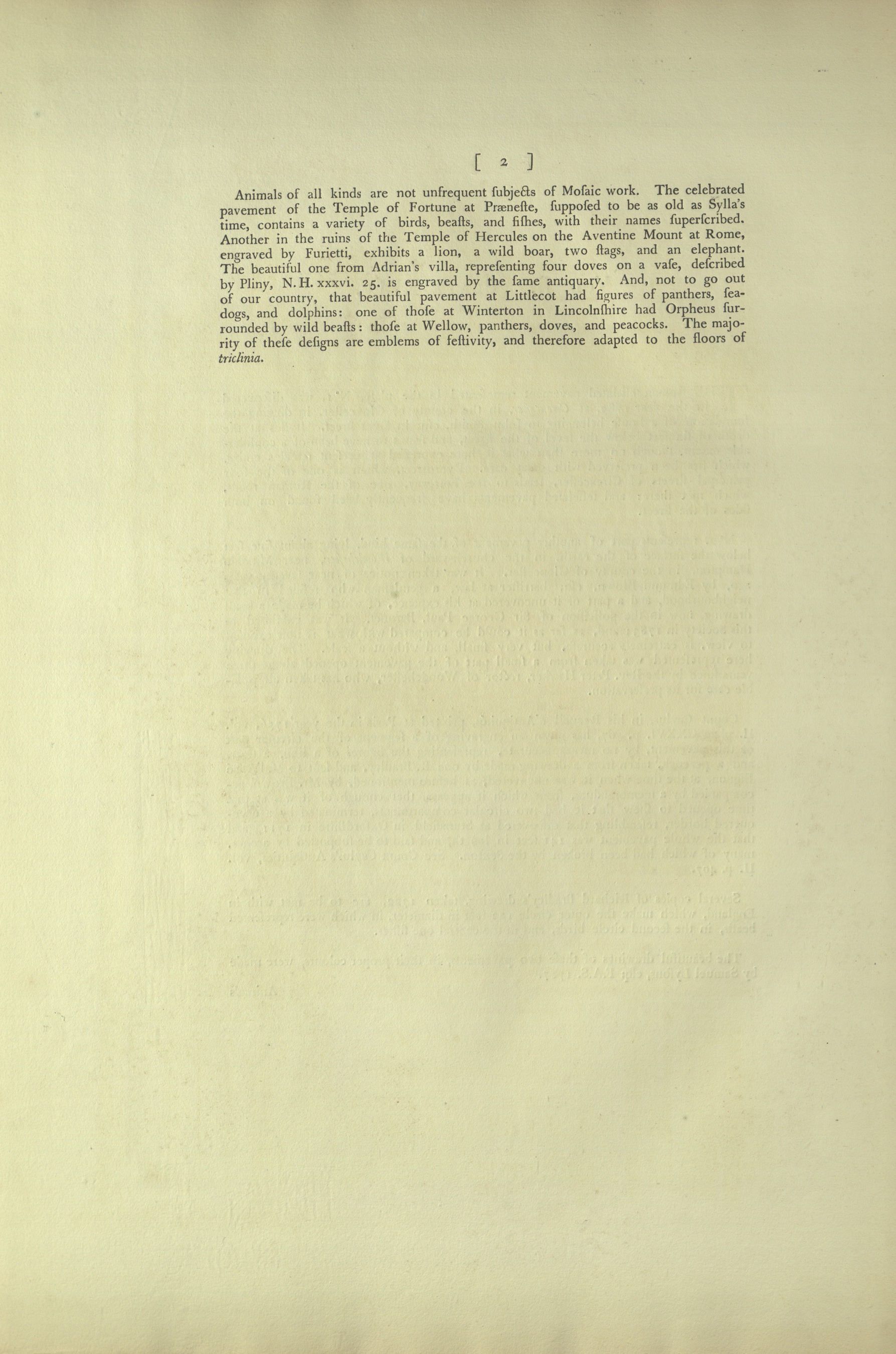VOL. II. PLATE XLIV.
It lies at the depth of six feet below the level of the street, and seems to have been of a considerable extent, though no more than what is here expressed at present remains entire, which has been preserved with great care. Dyer-street, which is one of the four principal streets of Cirencester, leads to the Foss-way, one of the Roman roads, which met there: and tesselated pavements have frequently been found on both sides of the street.
No 2. represents part of another pavement of the same kind, lying about five feet below the surface of the earth, in the church-yard of Woodchester, near Minchin Hamton, in the county of Gloucester. It was taken notice of near seventy years ago, by Edmund Brown, esq; barrister at law, a gentleman who resided in that neighbourhood, and a part of it uncovered at his expence, of which he made a small drawing, now in the possession of Sir George Paul, Baronet. It was exhibited to this Society in 1783; and, as far as it could be compared with what is now exposed to view, is extremely accurate, but very small, and without a scale. The drawing here represented was taken from a small part of the pavement opened about three years since by the Rev. Peter Hawker, rector of Woodchester, who has taken all possible care for its preservation.
Count Caylus, in his Recueil d’Antiquités, printed at Paris in the year 1756, vol. II. plate CXXVI. p. 407, has given an engraving of a segment of the circular part of this pavement, by no means accurate, representing the figures of a lion, a tiger, and a peacock, taken from a drawing made by one R. Bradley, and sent to M. l’Abbé Bignon, at the time when it was uncovered, as before mentioned, by Mr. Brown, accompanied by a memorandum, from which it appears, that enough of it was at that time opened to shew that it had two circular compartments, terminated by a checquered border, resembling that discovered at Stunsfield in Oxfordshire in 1711, and that the whole pavement was 141 feet in length, and said to be supported by arches, many of which had been broken by the Sexton. See Count Caylus’s Antiquities, vol. II. p. 407.
Several copies of Richard Bradley’s drawing, taken 1722, are to be met with in England, which make the outer circle 122 feet in diameter, in which were represented beasts, in the second circle birds, and in the central one fishes.
The beautiful drawings of these two pavements, in their proper colours, were made by Samuel Lysons, esq; F.A.S. 1787.


